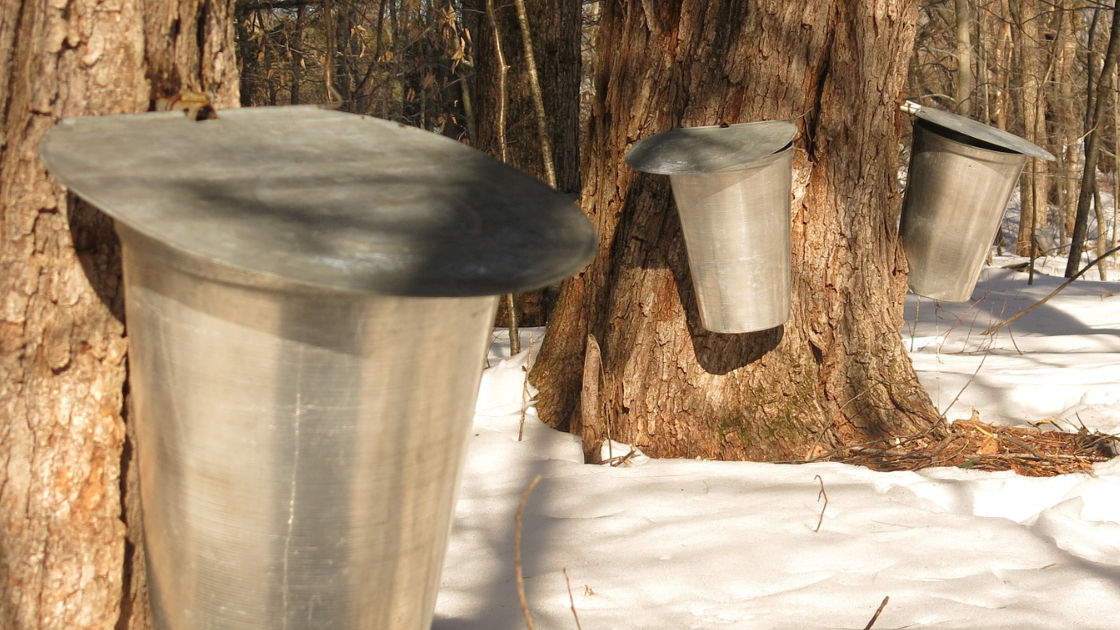Each Spring, Quiet Valley makes its own maple sugar. We all love the sweet, sticky sap that comes from these types of trees for our pancakes and for adding to all sorts of recipes, such as maple ginger salmon. This past week we started tapping the trees around the farm. A good tap tree is about 10 to 20 inches in diameter, which makes the tree about 40 years old. A tap is drilled into the tree and a small metal tube called a spile is inserted into the tree. The sap runs down the spile and spills into a waiting container. In our case those are sterilized glass jars but these can be buckets or even special bags. I was really surprised to see that the sap was clear. (I had assumed it was going to be colored.)
The jars are collected twice a day, but with how quickly the sap is flowing now, it might be three times a day. Once enough maple sap is collected then we have a Maple Sugaring Event which is open to all members of Quiet Valley. During this event the sap is heated in big vats and refined into the syrup we love.
How does this work? During the summer, the trees store sugar and nutrients in their roots. In the Spring, when the weather begins to warm, the sap begins to return to the top of the tree to help grow the leaves. The best time to gather the sap is when it is warm during the day and cold at night. That way the sap runs better. You don’t have to stop at just tapping maple trees but can also tap birch trees, black walnuts, hickory and box elder. This Saturday, February 25th, we’ll be cooking down the sap and making maple sugar.
